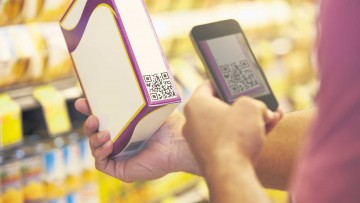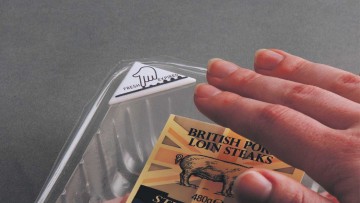As consumers, we are now both more health conscious and sceptical than ever before. High-profile scandals in the food, banking and automotive sectors have made people more mistrustful of almost every product they purchase, creating pressure for greater transparency around just what it is people are buying, and where it has come from.
As a result, labels are playing an increasing role in helping organisations convey information to consumers, not only to comply with legislation, but also to stand out from competitors. “Consumers are keen to get more information about what they are buying, as well as what makes up the product they have chosen, and about the company making it,” says Mike Jarvis, cluster portfolio manager, Europe and Central Asia, marketing and product management, at food packaging business Tetra Pak.
“This needs to be clear, consistent and transparent, linking to platforms which offer greater detail and, ideally, independent product reviews. There is a race for space to communicate these messages.”

Confusing customers
At the same time, however, the current picture is both confused and confusing. “Price labelling in supermarkets is probably one of the biggest consumer annoyances,” says Helen Dewdney, author of both How to Complain: The Essential Consumer Guide to Getting Refunds, Redress and Results, and The Complaining Cow blog. “Consumers are sick and tired of labelling that makes it difficult to work out what item is the best offer. There has also been a lot of talk about traffic light systems for showing how healthy a food is. But consumers want consistency – it’s not helpful to have a different system giving similar nutritional information across supermarkets.”
Sell-by and use-by dates are a particular source of confusion, says Nir Wegrzyn, chief executive at global brand design and packaging agency BrandOpus. “These mean two totally different things and consumers don’t have the time or the inclination to understand the difference,” he says.
“The whole idea is also seriously compromised when products that clearly don’t require this kind of legislation are forced to adopt it. Honey, for example, doesn’t go off. Some brands out there have had a bit of fun and switched out ‘use by’ for alternatives such as ‘throw me away after’. This is a much clearer instruction to consumers and doesn’t leave any ambiguity.”

QR codes
Making labels clearer
New legislation is adding to the pressure for labels to be clearer. In 2016, the European Union’s Food Information Regulation will come into force, meaning all food products will have to provide full nutritional information. “Any products that fail to comply will create significant losses – the impact on the bottom line could be over £100,000,” says Shaun Bosson, executive vice president, global sales, at packaging business Trace One.
Information sharing will extend beyond the limited space on product packaging and labelling to mobile screens and social media via QR codes
This could be just the beginning of a push towards greater transparency, particularly in the food sector. “Some countries, such as Germany, also have regulations that mean brands can no longer use a picture of a food if it’s made using artificial flavourings,” says Amy Steinmetz, vice president, managing director, at LPK Europe. “For example, sweets made with strawberry flavourings cannot have a picture of a strawberry, but instead there can be an image that represents a strawberry. It both makes legislation tough to navigate and forces a new level of transparency.”

Bump Mark: Solveiga Pakstaite’s award-winning bio-reactive expiry label, which becomes bumpy when the food expires
Labels, though, do more than simply convey information and help organisations meet regulatory requirements. New technology means some businesses are now seeing them as a form of marketing, helping to entice and engage customers. An example is the winner of the 2014 James Dyson Award, Solveiga Pakštaitė, who created a bioreactive label to help alert customers when items could be going out of date. “The idea is simple – when the label becomes bumpy to the touch, your food is off,” says Vicky Bullen, chief executive at design agency Coley Porter Bell.
Emerging trends
New developments could help to change the landscape still further, with labels becoming a starting point for finding out information, rather than a final destination. Phil Dalton, head of regulatory at Sun Branding Solutions, believes radio-frequency identification or RFID will soon be able to allow shoppers to tot up the total nutritional value of a basket of shopping rather than individual items. “This could supplement the information offered on a label,” he says. “RFID not only ensures traceability, it could also point consumers towards the impact of individual food choices on their overall diet.”
Mobile devices too will have a greater role to play, potentially easing the battle for space on more conventional labelling. “Information sharing will extend beyond the limited space on product packaging and labelling to mobile screens and social media via QR [Quick Response] codes,” says Trace One’s Mr Bosson. “In future, consumers could even ‘opt in’ to information that is most relevant to them.”
This kind of development could also help the packaging and labelling industry respond better to rapidly emerging trends, says BrandOpus’s Mr Wegrzyn. “The logistics of printing mandatory information makes it impossible for brands and manufacturers to keep in step with the ever-changing viewpoint on health and nutrition,” he says. “One day fat is the issue, the next day it is sugar and in the future it will be something else. A digital approach could be a lot more effective way to keep information up to date and current.”
